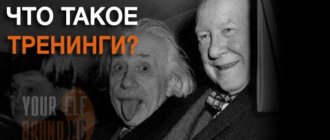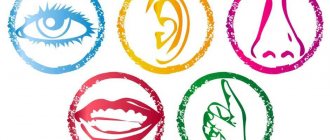Every person faces a dilemma in life. But not everyone knows what this concept means. It is easy to explain in simple words. Therefore, it is worth understanding what a dilemma means, how it manifests itself, and where this concept came from.
A dilemma is a problematic situation in which one must choose one option out of two. In other words, when the choice becomes “either one or the other.” There is no third. This is an explanation of the term in accessible language.
If you turn to explanatory dictionaries, they decipher this concept in different words. But all explanations carry a single thought. So, the values can be as follows:
- Judgments that have opposite provisions. They exclude the possibility of a third inference.
- A situation where it is equally difficult for a person to decide in favor of one or another judgment. They, in turn, are opposite, which makes it difficult to choose.
Reference! This term is used both by mathematicians and logicians, and by ordinary people in everyday life. Every person has faced this situation.
What is a dilemma?
The word Dilemma takes its roots from the Latin language. This concept consists of two words: di (two) and lemma (judgment, opinion, possibility). That is, it can be literally translated as “double opportunity” or “dual opinion.”
The origin of the word “dilemma” is based on the situation of choosing one of two. But there is a choice from a larger number of options, you will say, and you will be absolutely right. Such situations received appropriate names: trilemma, polylemma, and so on. However, we are all more familiar with the word dilemma, since it is most often used in everyday life.
In fact, a dilemma is not even a choice, but a kind of analysis of prerequisites. From a scientific point of view, the dilemma does not give much importance to choice. It is the problems of preconditions that are considered here. But since they both lead in the same direction, the choice does not matter in principle.
Consider a classic example: there is an opinion A and an opinion B. Both opinions lead to result B. A dilemma arises: which opinion will be the most correct? The question is not considered here: what to choose, but rather an analysis of opinions and prerequisites is carried out to identify the most correct result.
It doesn't matter what you choose in a controversial situation. The result will ultimately be the same. In other words, a dilemma is an either-or situation with a single result. Dilemma questions can touch on very subtle aspects of life.
For example, according to the samurai code of honor - bushido, dying on the battlefield is considered a great honor. If a warrior in a life or death situation chooses the former, the outcome will be no different from death. By choosing life, he dooms himself and his family to eternal shame. Having chosen life, he in fact chooses death, only a little different. Thus, there is no importance of choice in the dilemma. There is the importance of the truth of an opinion or premise.
What is a dilemma? The definition in simple words can be found in the dictionary. It states that a dilemma is a choice between two mutually exclusive premises or conclusions. Or simply put: when there is no third option. One way or another, a dilemma is always a choice. The choice in the dilemma could be:
- Important;
- Imaginary;
- Unimportant;
- Obvious;
- Conscious;
- Unconscious.
You can talk endlessly about the importance of choice, but sooner or later you will have to make it. Every day in the world, people are faced with a dilemma when they have to make a choice between two. This affects almost all areas of human life:
- Sport;
- Job;
- Business;
- Music;
- Education.
The question of choice also affects the spiritual spheres, forcing one to decide on religious views and worldview.
Two definitions
This beautiful and not very clear word has two meanings. One belongs to the realm of logic or philosophy, and the other to psychology or sociology. Let's look at both definitions:
- A combination of two judgments that are opposite in meaning, but without the ability to formulate a third.
- A situation in which you have to choose between two solutions, since they are opposite in meaning and give rise to difficulties of the same scale.
Dilemma
It is the second meaning that is most often implied in book and journalistic speech. Hence the expressions: “unsolvable dilemma”, “dangerous dilemma”, etc. In a certain sense, it is consonant with the well-known expression “there is no third option.” Such situations are not uncommon in everyday life. The simplest example: a person needs to decide whether to stay in a well-paid job, which is a burden to him, or change it to a more pleasant one, but one that brings in significantly less income.
Types of dilemmas
Depending on what area of life the problem of choice affects, the dilemma takes on a certain direction. It is generally accepted that there are five main types of dilemmas:
1. Ethical.
2. Moral.
3. Moral.
4. Psychological.
5. Prisoner's dilemma.
They all come down to a choice of mutually exclusive premises. The only difference is the identity of the choice. Let's look at them in order of importance.
A dilemma in psychology is represented by mutually exclusive choices. A person will be faced with questions of either/or psychological choice throughout his life. This question can arise in almost any situation when you need to overcome yourself.
Most often, a person makes this choice unconsciously, on a subconscious level. But in any case, a person will be fully aware of the consequences of his choice. This can manifest itself in various emotions:
- Anger;
- Shame;
- Sadness;
- Self-confidence.
One way or another, the dilemma in matters of human psychology comes up very often. A person may not even realize that he is faced with a choice. But in any case, he will do it.
Ethical dilemma also relates to psychological choices. But here the question is in the interaction of people with each other. Choice is most often represented by a question of the relationship of one person to another or in the determination of a specific action. This issue may involve moral and ethical values.
However, it is usually characterized within the framework of acceptable behavior within a certain circle. An ethical dilemma can arise during the interaction of two different social groups or in a professional relationship: specialist-client.
Typically, the choice in an ethical dilemma involves accepting the rules of the game. In this case, you either act in a closed system in accordance with the rules, or without taking them into account.
To solve an ethical dilemma, the prisoner's dilemma and game theory can be used. The Prisoner's Dilemma is a theory that states that players will not interact with each other even if it is in their best interest to do so. It is also called the prisoner's dilemma.
This is a fundamental position from game theory. The theory itself describes the rules of behavior of players in a closed system (game). This is true of any closed system with clearly established rules and a set of possible actions.
Game theory can mathematically describe almost any situation and predict its development. The prisoner's dilemma in this theory is necessary to describe the behavior of two players from different teams, representing different interests, but having a common goal. The bottom line is this: players from different teams will choose betrayal over cooperation, even if the latter leads to mutual benefit.
Players in this system are only interested in their own benefit. Therefore, cooperation for players is considered unacceptable, due to the benefit of the opponent.
To solve the prisoner's dilemma, we can consider moral dilemmas. The moral issue is the choice between acting according to established rules or resisting the system. This dilemma is very similar to an ethical one. However, if in an ethical dilemma the choice is made between playing by the rules or without them, then the moral one assumes that the rules have already been accepted, but in order to perform the action it is necessary to step over them.
There is a special kind of dilemma - a moral one. A moral dilemma is making a choice according to personal preference. That is, when a person is faced with a choice: to do as he likes or as he should. Often what is needed in this matter is determined by the imposed rules of the game. On the other hand, morality is defined as part of the rules, only more acceptable for a particular player. In other words, a moral dilemma is a choice between “I want” and “I must.”
To better understand the types of dilemmas and their relationships, I propose to consider each using examples from life.
How to solve
Any solution to a dilemma is a search for the safest option of two or combining them into something like a compromise. To achieve this, a person needs to work internally with himself.
You can follow this algorithm:
1. State what the dilemma is.
2. Collect and analyze known information from all sides.
3. Look for other options besides the two opposite and obvious ones. Check each solution found against:
- correctness (on a personal moral scale);
- utility;
- morality;
- legality.
4. Eliminate completely unacceptable options from the list of solutions.
5. By the method of elimination, leave one thing.
6. Check the selected solution in three ways:
- imagine doing this; what do you feel, do you want to do things differently;
- imagine how the decision you make will affect your family;
- imagine the reaction of your social environment (friends, colleagues, neighbors, acquaintances); can you survive this?
8. Provide justification for the decision made (what it will give you or what it will save you from).
9. Analyze the negative consequences that this decision may lead to.
Dilemma: examples from life
Let's consider classic examples of dilemmas from life to clearly understand what is described. Let us describe a situation in which there is a reason (P), the first prerequisite (A) and the second (B), as well as the result - C.
So, in my youth I had a cat. A good, beautiful cat, but with one drawback - he always shit in the wrong place. I had a dilemma: the cat was pooping in the wrong litter box and I had to do something about it (P).
Two prerequisites arose: either train the cat to use the litter box (A) or give it to other people (B).
In both situation A and situation B, result C will be achieved - the cat will stop pooping in the wrong place. This is a classic dilemma in which the result is achieved by two interchangeable premises. But in any case, the desired result is achieved. If you're interested in how it all ended, I'll tell you. The cat was eventually litter box trained. True, it took a lot of effort. But that is another story. For now, I will describe examples of different types of dilemmas.
Moral Dilemma: Real Life Examples
Examples of a moral dilemma can be given by situations in which it is necessary to step over certain rules.
For example, the most trivial example would be a crime. Let's say you need to earn a certain amount of money. They can be earned (A), or they can be stolen (B). In both cases, result (B) is achieved.
A more complicated example: you are a school student and you have a lesson. You need to leave early. You can do this according to the rules by asking to take time off from class (A), or you can leave on your own (B). In any case, result B will be achieved.
As is clear from the example, in a moral dilemma a person decides what is closer to him: following the rules or achieving a goal. For example, the very thought of theft disgusts me. I even cross the road only when the light is green, regardless of whether there are cars nearby.
However, I admit that in the absence of choice, for example, in a situation of military operations and the impossibility of getting what you want legally, the rules established by society and the law can be broken.
Ethical Dilemmas: Examples
The easiest way to explain this concept is to give examples of ethical dilemmas at work. Ethical dilemmas often appear in the work of a psychologist.
For example, a psychologist needs to help a client (P). He can do this according to all the rules (A), or give in to the rules for the sake of the result (B). In any case, the result will be achieved, one way or another. The opposite situation, in which it is necessary to indicate to the person the exit (P). You can do this according to all the rules (A), or behave more harshly (B). The result will be achieved in any case.
If this example is not clear, I will give a simpler one.
Imagine that you are a doctor who has learned an intimate secret of a patient. This man cheated on his pregnant wife and contracted gonorrhea. On the one hand, it is impossible to inform his wife about this - this is at odds with the principle of maintaining medical confidentiality (for disclosing it, by the way, the doctor can receive a real sentence).
On the other hand, if this man infects his wife, this will have an extremely negative impact on their unborn child. What to do in such a situation? How to protect your baby? After all, a doctor’s job is to help people. In this case, P, that is, the desired result, is help, and the options for achieving this result are the disclosure of medical confidentiality or the construction of a treatment system in such a way that the man certainly cannot harm his wife and child.
Prisoner's dilemma
To consider the prisoner's dilemma, the political situation in the world immediately comes to mind. Let's take a trite look at the relations between Russia and the United States. Let's say it is necessary to give a qualitative impetus to the economies of countries.
It is clear that with the mutual assistance of these countries to each other, their economic situation can reach much greater positions in a short time. But, since they are rivals in this game, and each represents their own interests, it is not profitable for them to interact, since this will lead to the prosperity of the opponent. Even if the benefits of cooperation far outweigh their disadvantages, players will try their best to play individually.
If you enter “prisoner’s dilemma: real-life examples” into the search bar in your browser, the search engine will not reward you with a large number of interesting and accessible results. This is strange, because such a dilemma is very common in everyday life.
For example, you and your colleague were given the same tasks and promised a bonus to the first person to submit a report. Obviously, if you combine your efforts, you will save a lot of time, and one way or another, get the job done. But the desire to be the first to receive the reward does not give you the opportunity to cooperate. Therefore, you are more likely to try to overtake your colleague than to cooperate with him.
Varieties
So, what is the dilemma? Something that often happens in life. In addition, there are different types of this phenomenon.
For example, in a purely scientific definition, a constructive and destructive option are distinguished. You can read more about them in a logic textbook. And in a well-known sense, social dilemmas are distinguished, including: ethical, moral, environmental, as well as situations with intriguing names “prisoner’s dilemma”, “secretary’s dilemma” and “Samaritan’s dilemma”. Let's take a closer look at some of these varieties.
External characteristics
The following characteristics are provided for Laquedanzi birds:
- The head is medium in size, proportional to the body, the neck is long.
- The comb is shaped like a jagged leaf, colored dark purple, it may have 5 or 6 notches, the lobes are colored dark purple.
- The eyes are large, round, purple-black, the area around the eyes is dark purple.
- The beak is dark gray, almost black.
- The build is light, not large.
- The shape of the case resembles the Latin letter “V”.
- The chest is wide and powerful.
- The wings are well developed.
- The feathers grow densely, are black with a hint of green, and shiny. Black fluff grows between the feathers.
- The legs are painted dark gray.
- The tail is long, bushy, raised upward.
- Their character is not pugnacious, they get along without problems, but they are easily frightened.
- The body weight of a rooster is about 1.8 kg, the weight of a chicken is about 1.4 kg.
Important characteristics for admission to breeding are:
- The absence of other shades in the plumage except black with a green tint.
- Egg production is at least 160 eggs per year.
- The eggs have a green colored shell.
Moral
One of the most difficult situations you can ever find yourself in. It is necessary to choose one of mutually exclusive options, and both will not bring anything good.
Moral dilemma is a common plot twist in works of fiction. These cases usually involve death. For example, the main character must choose whether to sacrifice himself to save others or not; which of the two friends should he help, because he manages to save only one; whether to abandon the wounded man to bring help; during a difficult birth, save either the child or the mother, etc.
People usually prefer not to think about such questions. And for those who reflect, the hypothetical choice may not coincide with the real one if a real dilemma arises. This, which is important, often happens in extreme situations.
Neutralizing potential killers
Over the past 20 years, neuroscientists and psychologists have conducted many tests that prove that the tendency to violence is largely determined by disorders in the brain. For example, dissocial, borderline, and narcissistic personality disorders often manifest themselves in this way (although, of course, not all people with this diagnosis are prone to violence). In all these pathologies, when studied, characteristic physiological manifestations are revealed: changes in the tonsils, which are involved in the formation of emotions, changes in the level of metabolism in the anterior cingulate cortex, which is involved in the control of impulsive reactions, etc.
For now, such studies remain nothing more than just research, but perhaps in the future they will become the basis for creating technology for early detection of propensity for violence. Is proactive surveillance of a potential killer justified if he hasn't done anything yet?
Links[edit]
- Garner, Brian (2009). Modern American Use of Garner. Oxford University Press. ISBN 9780199888771.
- Nuchelmans, Gabriel (1991). Dilemmatic Arguments: Toward a History of Their Logic and Rhetoric
. North Holland. p. 89. ISBN 0-444-85730-3. - Nuchelmans, Gabriel (1991). Dilemmatic Arguments: Toward a History of Their Logic and Rhetoric
. North Holland. p. 94. ISBN 0-444-85730-3. - Nuchelmans, Gabriel (1991). Dilemmatic Arguments: Toward a History of Their Logic and Rhetoric
. North Holland. pp. 102–6. ISBN 0-444-85730-3. - Hamilton, Sir William (1863). The Logic of Sir William Hamilton, Barth. Moore, Wilstach and Baldwin. paragraph 185.
- Jump up
↑ Erasmus, Desiderius (2003). Paraphrase Luke 11-24. University of Toronto Press. paragraph 158. ISBN 9780802036537. - Lucia Calboli Montefusco, The Rhetorical Use of Dilemmatic Arguments
, Rhetoric: A Journal of the History of Rhetoric Vol. 28, No. 4 (Fall 2010), pp. 363–383, at p. 364. Publisher: University of California Press on behalf of the International Society for the History of Rhetoric. DOI: 10.1525 / rh.2010.28.4.363 JSTOR 10.1525 / rh.2010.28.4.363 - Ghosh, Sujata; Prasad, Sanjeeva (2016). Logic and its Applications: 7th Indian Conference, ICLA 2021, Kanpur, India, January 5-7, 2017, Proceedings. Springer. paragraph 177 note 5. ISBN 9783662540695.
- Church, Alonso (1996). Introduction to Mathematical Logic. Princeton University Press. ISBN 0691029067.
- Govier Proceedings (2009). A Practical Study of Argumentation. Cengage Learning. ISBN 978-0495603405.
- Harriman, Benjamin (2018). Melissus and Eleatic Monism. Cambridge University Press. paragraph 44. ISBN 9781108416337.
- Sedley, David (2018). "Diodorus Kronos". Stanford Encyclopedia of Philosophy
. Metaphysical Research Laboratory, Stanford University. - Palmer, John (2017). "Zeno of Elea". Stanford Encyclopedia of Philosophy
. Metaphysical Research Laboratory, Stanford University. - Johnsen, Albert R.; Toulmin, Stephen Edelston (1988). The Abuse of Casuistry: A History of Moral Reasoning. University of California Press. paragraph 75. ISBN 9780520060630.
- Peters, Francis E. (2003). The Words and Will of God. Princeton University Press. paragraph 154. ISBN 0691114617.
- Johnsen, Albert R.; Toulmin, Stephen Edelston (1988). The Abuse of Casuistry: A History of Moral Reasoning. University of California Press. paragraph 54. ISBN 9780520060630.
- Birkenkötter, Hannah, Valentin Jeutner: Undecidable Standards of Conflict in International Law: The Concept of a Legal Dilemma
, 28 (2017) European Journal of International Law 1415-1428. - ↑
Leibniz, Gottfried Wilhelm, "First Dissertation on Perplexing Cases in the Law" in Alberto Artosi, Bernardo Pieri and Giovanni Sartore (eds.),
Leibniz: Logical-Philosophical Conundrums in the Law
(Springer 2013). - Jeutner, Valentin (2017), Intractable Conflicts Standards in International Law: Understanding the Legal Dilemma, Oxford University Press, pp. 15, 72. See also Michael Bolander, “Shipwrecked Sailors, Unborn Children, Siamese Twins and Hijacked Planes— the taking of human lives and the defense of necessity” (2006) 70 Journal of Criminal Law 147.
- Jeutner, Valentin (2017), Intractable Conflicts Standards in International Law: Understanding the Legal Dilemma, Oxford University Press, pp. 10-11.
Greek origin. Math and Spelling
We owe this definition to the Greek language. The literal translation from the Greek is "double lemma". Thus, it is not so difficult to remember how this word is spelled: with one “m” or with two. You just need to clearly understand that a lemma is an auxiliary theorem in mathematics that has no independent value and is necessary only to prove another theorem. And only two letters “m” are always written in this term.
If the information given above is retained in memory, then there will be no problems with writing the word. Sometimes the deck is shuffled very whimsically, as M.A. Bulgakov wrote, and knowledge of mathematics can help so that a person makes fewer mistakes in the Russian language, and he does not have a question about how to write “dilemma” or “dilemma”.
Post-conventional level (10-15% of the population)
A person comes to his own rules, independent of others. An understanding comes that if the laws dictated by society contradict the personal understanding of the rules and laws, then it is worth following your own judgments, avoiding social orders. Few people are ready to think critically and reach this level.
Stage 5. Social contract and personal rights:
Despite understanding that laws exist “for the common good,” sometimes it is necessary to break social rules in order to help a person. For example, in the dilemma above, Heinz would be acquitted because he broke the law with good intentions.
Stage 6. Universal principles:
At this stage, a person develops his own moral principles, which he applies to everyone else. These principles are independent of imposed laws. Their basis is the decision of the individual himself that it is right to do so.
In this theory, of course, not everything is smooth: the situations are fictitious, and the examples may be biased (as the authors of the theory say). However, this theory can be useful to us as teachers, primarily because a teacher is not only a specialist who teaches a subject, but also an educator who develops students from different aspects, including moral ones. Therefore, we have several options for using this experiment:
- use history for storytelling, stopping at each of the “forks” and discussing all the options, organizing a discussion after completing the task;
- use the story's actions as a basis for role-play (Heinz and the pharmacist, Heinz and the policeman, Heinz in court);
- come up with an alternative ending;
- discuss other options for the development of events;
- ask each other questions, come up with additional questions;
- come up with a similar story;
- prepare students to write essays about morality;
- understand how your students feel about rules, whether they are ready to create, break, follow rules, this way you can diagnose possible impending behavioral problems in the classroom.
Share link:










